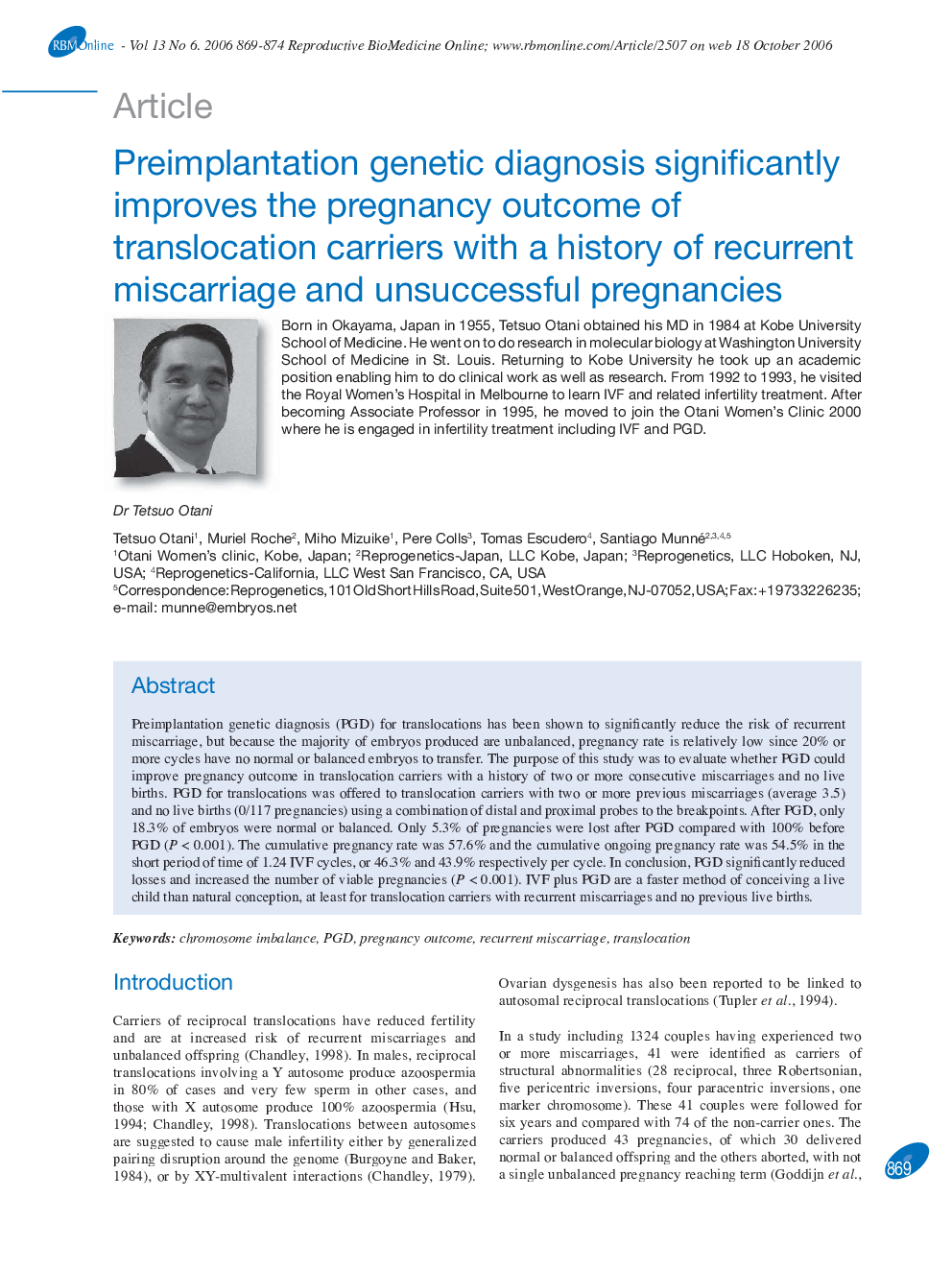| کد مقاله | کد نشریه | سال انتشار | مقاله انگلیسی | نسخه تمام متن |
|---|---|---|---|---|
| 3973403 | 1256849 | 2006 | 6 صفحه PDF | دانلود رایگان |

Preimplantation genetic diagnosis (PGD) for translocations has been shown to significantly reduce the risk of recurrent miscarriage, but because the majority of embryos produced are unbalanced, pregnancy rate is relatively low since 20% or more cycles have no normal or balanced embryos to transfer. The purpose of this study was to evaluate whether PGD could improve pregnancy outcome in translocation carriers with a history of two or more consecutive miscarriages and no live births. PGD for translocations was offered to translocation carriers with two or more previous miscarriages (average 3.5) and no live births (0/117 pregnancies) using a combination of distal and proximal probes to the breakpoints. After PGD, only 18.3% of embryos were normal or balanced. Only 5.3% of pregnancies were lost after PGD compared with 100% before PGD (P < 0.001). The cumulative pregnancy rate was 57.6% and the cumulative ongoing pregnancy rate was 54.5% in the short period of time of 1.24 IVF cycles, or 46.3% and 43.9% respectively per cycle. In conclusion, PGD significantly reduced losses and increased the number of viable pregnancies (P < 0.001). IVF plus PGD are a faster method of conceiving a live child than natural conception, at least for translocation carriers with recurrent miscarriages and no previous live births.
Journal: Reproductive BioMedicine Online - Volume 13, Issue 6, 2006, Pages 869-874